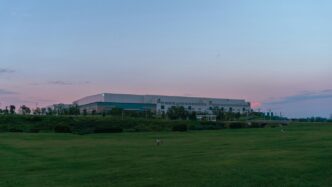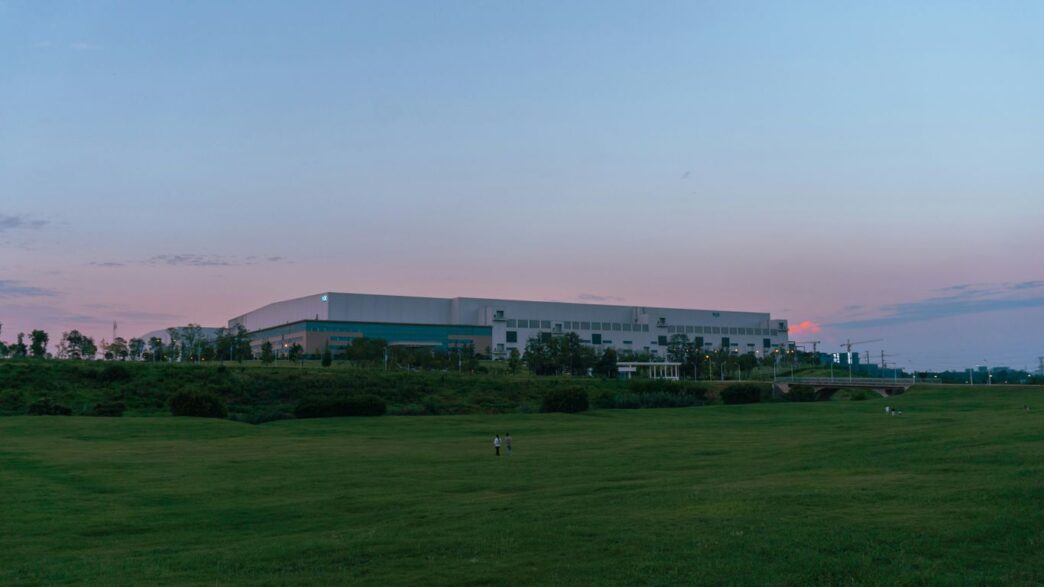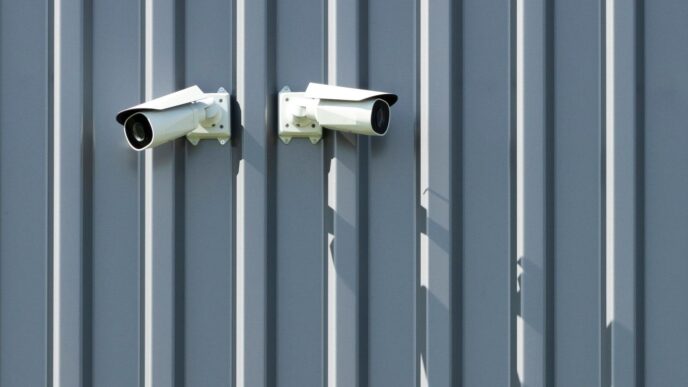OneWeb Satellites Florida: Transforming the Space Coast into a Manufacturing Powerhouse
Strategic Location Near Kennedy Space Center
It’s hard to think of a better place for satellite manufacturing than right next to Kennedy Space Center. Being just minutes from major launch pads means OneWeb Satellites can get freshly built satellites on rockets with very little delay. It also puts them close to key aerospace partners and events. This spot has turned into a huge advantage for building and sending satellites to orbit faster than ever before.
A few ways this location matters:
- Quick transfers from factory floor to the launchpad
- Constant access to launch schedules, reducing logistics headaches
- Easier collaboration with NASA, SpaceX, and other aerospace companies nearby
Impact on Brevard County’s Economy
OneWeb’s plant isn’t just about satellites—it’s a major driver for the local economy. Since operations ramped up, hundreds of new jobs have appeared, both direct and indirect. Neighboring businesses, housing markets, and even local training programs have felt the boost. During economic slowdowns, like the COVID-19 pandemic, aerospace spending helped keep Brevard County afloat when tourism sagged badly elsewhere in Florida.
| Metric | Pre-Plant (2018) | With Plant (2025) |
|---|---|---|
| Direct Jobs | 0 | 300+ |
| Indirect Jobs | 0 | 600+ |
| County Unemployment % | 5.8 | 3.1 |
| Aerospace Output ($B) | 2.5 | 4.0 |
Space Coast’s Appeal to High-Tech Industries
Brevard County and the broader Space Coast have been in the spotlight for tech jobs for a while, but OneWeb Satellites is giving even more reason for others to join. The combination of skilled talent, supportive local leadership, and a culture centered on innovation makes this strip of Florida more than just a spot for tourists. Companies like OneWeb notice:
- Steady pipeline of experienced engineers from local universities
- Wide network of aerospace suppliers and service companies
- A community that actually understands and supports tech and space workers
In some ways, the Space Coast has found a second life as an innovation hotspot—and OneWeb Satellites is right in the middle of that change.
Pioneering High-Volume Satellite Production at the Merritt Island Facility
Transition from France to U.S. Manufacturing
Moving satellite production from France to Florida could have sounded like a wild idea years ago, but now it just makes sense. Merritt Island landed the gig not just for its view of rockets heading skyward but for its skilled workforce and easy access to Kennedy Space Center. OneWeb Satellites didn’t simply copy their French line—they reimagined it for speed and scale. Engineers brought lessons from Europe while mixing in local know-how, resulting in a facility that feels ready for whatever the global market throws at it. Now, this site on Florida’s Space Coast rolls out satellites at a pace that surprised a lot of folks used to slower old-school builds. If you want to understand how businesses get efficient and organized as they expand, platforms like TeamWave show similar principles in a digital space.
Automation and Advanced Production Techniques
At Merritt Island, robots and specialized machines do much of the heavy lifting. You’ll see everything from automated arms placing hundreds of tiny components to advanced testers checking each finished unit before it leaves the line. Here are a few things they did to speed things up:
- Set up modular stations, so different satellite types can go through the same line.
- Used automated panel manufacturing tools—some processes that used to swallow a half hour now finish in 90 seconds.
- Real-time sensors and quality controls to catch problems instantly, not weeks later.
A lot of the methods come straight from high-volume auto-making, but adapted for space hardware. The goal is pretty clear: make more satellites, faster, and with fewer errors.
| Production Stat | Before Automation | After Automation |
|---|---|---|
| Avg. build time/unit | 7 hours | 1 hour |
| Staff required/line | 15 | 7 |
| Throughput/day | 1-2 satellites | 6-8 satellites |
Meeting Global Demand for LEO Satellites
Demand for low Earth orbit (LEO) satellites just keeps rising. Broadband internet, global IoT, and earth imaging companies all want to orbit their networks as soon as possible. For OneWeb Satellites Florida, that means:
- Shifting schedules on a dime whenever a new contract comes in.
- Balancing steady constellation orders with custom satellites for special missions.
- Playing catch-up when supplier delays or launch windows move—a common headache.
In this market, being able to turn out a new batch of satellites at short notice keeps OneWeb Satellites in the running, even as other constellations like Starlink and new players crowd the field. High-volume won’t always mean easy, but Merritt Island’s recipe—speed, automation, and a few local tricks—sets a new mark for what a space factory can look like in 2025.
How OneWeb Satellites Florida Navigates Industry Challenges and Supply Chains
When most people think about building satellites, they picture clean rooms, engineers in lab coats, and maybe the thrill of a launch day. What doesn’t leap to mind are pandemic-fueled delivery delays, missing components, and the scramble to keep assembly lines moving. OneWeb Satellites Florida has faced all of that and more, especially over the past few years. Here’s a closer look at how the Merritt Island facility handles industry hurdles and keeps those satellites rolling out.
Addressing Pandemic-Driven Vulnerabilities
COVID-19 exposed some weak spots in the global supply chain, and OneWeb Satellites Florida was not immune. It wasn’t just about masks and social distancing—they had to figure out how to get critical parts when suppliers were closing or facing their own problems. The team responded with some quick thinking:
- Expanded their list of suppliers to avoid any single point of failure
- Built up a buffer stock of essential inventory, so a delayed shipment wouldn’t stop everything
- Shifted production schedules and roles for safety and flexibility
Establishing Robust Supplier Networks
Once the early shocks wore off, it was clear things needed to change for the long term. OneWeb Satellites Florida started building a wider and more resilient web of suppliers, both local and global.
Here’s what their approach looked like:
- Identify single-source risks and find backup vendors
- Partner with regional suppliers to reduce shipping times
- Hold regular audits and meetings to spot issues before they get serious
| Year | Number of Critical Suppliers | Local (State of Florida) | International |
|---|---|---|---|
| 2020 | 25 | 4 | 21 |
| 2023 | 38 | 10 | 28 |
Leveraging Advanced Manufacturing for Resilience
Automation isn’t just about cutting costs—it’s about keeping things running when people or parts might not be available. At the OneWeb Satellites Florida facility, robots and digital systems play a big role in minimizing slowdowns when the unexpected strikes.
- Automated guided vehicles (AGVs) move parts around the factory quickly and safely
- Real-time inventory tracking spots shortages before they become a crisis
- Digital quality checks mean less rework, saving both time and precious components
The combination of human agility and automated precision is what keeps OneWeb’s production lines humming, even when the world outside gets complicated. They’ve learned to expect the unexpected and plan for it, which, in satellite manufacturing, might just be the secret sauce.
Collaboration and Innovation Fuel Growth at OneWeb Satellites Florida
It’s not just about building satellites at breakneck speed on Florida’s Space Coast. The real story is how teaming up with industry giants, using new tech, and training local workers are all coming together to boost OneWeb Satellites Florida. These different pieces keep pushing the factory forward and set it apart in the worldwide satellite business.
Partnerships with Airbus and Beyond Gravity
Working hand in hand with major partners like Airbus and Beyond Gravity has been a total game-changer for OneWeb Satellites Florida. These partnerships mean more than just sharing resources:
- Airbus brings satellite design know-how and lessons learned from European production lines.
- Beyond Gravity supplies custom satellite structures and uses precision manufacturing right here in the U.S.
- Regular technical exchanges make sure production issues get fixed quickly.
All this adds up to faster builds, new design tweaks, and more reliable satellites getting out the door each month.
Integrating Next-Generation Technologies
Bringing in next-gen tech isn’t just about robots or shiny new tools. It’s also about how OneWeb Satellites Florida solves real problems in the factory:
- Automated assembly and testing help catch tiny errors and speed up delivery.
- Digital twins let engineers spot and solve issues before physical builds even start.
- Custom software shortens the feedback loop between design, test, and manufacturing teams.
Here’s a quick look at how some of this tech speeds things up:
| Technology | Result |
|---|---|
| Robotic assembly arms | Lower labor hours |
| Automated testing rigs | Fewer quality issues |
| Digital model tracking | Faster troubleshooting |
All these tools mean fewer costly mistakes and a better end product for global internet customers.
Workforce Development and Talent Attraction
None of these big moves matter much without the right people in the mix. After all, you need humans to keep machines running and make sense of new ideas. Here’s what’s happening on the ground in Brevard County:
- Partnerships with local colleges for hands-on training in aerospace tech.
- Internship programs pulling in high school grads from the area.
- Constant upskilling so current staff can handle the latest tech and processes.
The result is a growing pool of skilled workers who aren’t just filling jobs—they’re turning the Space Coast into a long-term home for satellite manufacturing. That means if you’re looking for a future in space tech, Florida isn’t just about launches anymore. It’s also about building what goes up.
OneWeb Satellites Florida’s Role in Global Connectivity Initiatives
Completing LEO Constellations for Worldwide Internet
For years, having reliable, fast internet everywhere sounded kind of dreamy—especially in remote areas. OneWeb has been changing that. From its Florida facility, OneWeb Satellites has been pumping out enough satellites to build a constellation circling the Earth in low orbit (LEO). By 2023, this work paid off: the constellation reached global coverage. That means people in spots where you couldn’t even get a cell signal now have a shot at being online. The Florida plant’s steady, high-rate output was a huge part of making that possible.
Here’s a look at some numbers:
| Year | LEO Satellites Launched | Global Coverage Achieved? |
|---|---|---|
| 2019 | 6 | No |
| 2020-2022 | 498 | Partial (northern latitudes first) |
| 2023 | 648 | Yes |
Synergy with Eutelsat Merger
Another big move was the merger with Eutelsat. Why does this matter? Eutelsat already had powerful geostationary (GEO) satellites, which are great for covering very wide areas but have limits with speed and consistency. OneWeb’s LEO satellites are quick but cover smaller spots. By putting both companies together, they basically created a one-stop shop for all types of global connectivity. Now, they can offer:
- High-speed, low-latency internet from LEO satellites
- Broad, stable coverage from GEO satellites
- More backup options if one network has an issue
Supporting Emerging Commercial and Government Services
OneWeb Satellites Florida isn’t just finishing a big project and calling it quits. Their factory keeps building new satellites to replace old ones and expand networks. This helps in a few areas:
- Commercial customers—like airlines and cruise ships—who want always-on Wi-Fi
- Rural communities or isolated towns looking for affordable internet
- Governments that use private satellite links for emergency communications or connecting field offices
The Florida team keeps talking with customers and governments about new needs. Whether it’s responding to natural disasters or helping a new business with internet in the middle of nowhere, OneWeb’s satellites built at the Florida facility are ready for the job.
Catalyzing the Space Coast’s Post-Pandemic Economic Recovery
The COVID-19 pandemic really hit Florida’s economy, especially around all the big theme parks and tourist stops, but the Space Coast stayed pretty resilient. While other places struggled with deep layoffs, companies here—especially those linked to the aerospace field like OneWeb Satellites—held steady. Aerospace spending during economic downturns has provided a buffer that set the region apart.
Impact of Aerospace Spending During Downturns
Instead of cutting back, both government projects and private aerospace ventures kept pushing forward:
- The federal government continued investing in rocket launches and satellite deployments, even as other sectors slowed down.
- Demand for satellite-based services actually increased. With more companies shifting to remote work, the need for better connectivity and monitoring from space jumped up.
- Local suppliers and manufacturers, many of them tied to space projects, managed to keep running when other industries had to pause.
The Space Coast’s jobless rate never climbed as high as places further inland that rely mostly on tourism. Here’s a quick table showing the contrast:
| County | Unemployment Rate (peak pandemic) |
|---|---|
| Brevard (Space Coast) | 14% |
| Osceola (Tourist hub) | 32% |
Comparative Economic Performance to Neighboring Regions
Let’s be honest, it hasn’t been perfect, but the numbers tell the story:
- The Space Coast reopened its economy quicker than many places because infection rates stayed lower.
- Major space operations, from launches to manufacturing at OneWeb’s Merritt Island plant, didn’t stop, so jobs kept coming in.
- Local supply chains faced some snags, but these motivated the formation of more reliable networks for future growth.
Long-Term Growth Projections for Space-Based Industries
If there’s a silver lining to all the turmoil, it’s that space-related industries seem ready for big things ahead:
- Analysts predict ongoing growth as companies look for stable returns outside the roller coaster of tourism and hospitality.
- More contracts are coming—both government procurements and commercial satellite launches—but also fresh investment in tech like 3D printing and automation.
- Local schools and training programs are ramping up to keep a talent pipeline moving into aerospace jobs.
All this suggests the Space Coast is not just bouncing back—it’s setting itself up as a stable, future-ready region for advanced manufacturing and space-based industries, with OneWeb Satellites right in the middle of it all.
Supporting Launch and Integration with SpaceX and Other Providers
OneWeb Satellites Florida isn’t just about building satellites—it’s also about getting them off the ground. Their connections with major launch providers like SpaceX have seriously changed how quickly new satellites get into orbit. It’s a whole process that starts at the Merritt Island facility and finishes with satellites circling the globe. Let’s break down what’s involved.
Coordinated Launch Campaigns from Florida
Working out the timing for launches isn’t as easy as it might sound. OneWeb Satellites has to organize everything from transport logistics to technical preparation, all under tight launch windows.
Some important steps in the campaign include:
- Careful scheduling around SpaceX’s busy manifest and varying weather on the Space Coast.
- Final assembly and testing before shipment to launch sites—minimal room for errors.
- Regular communication with ground operations teams to coordinate payload integration and stacking with the launch vehicle.
Everything works together to keep launches on schedule and make sure the satellites arrive ready for their missions.
Adapting to Shifting Global Launch Providers
After having to move away from Soyuz launches due to international tensions, OneWeb Satellites had to find new paths fast. SpaceX and India’s ISRO became go-to launchers. This switch required flexibility—getting all the satellites and hardware ready for different rockets and launch sites wasn’t a small task.
Here’s how OneWeb managed it:
- Rapid adaptation to different technical launch requirements for Falcon 9 and ISRO’s GSLV Mk III.
- Establishing redundant plans to deal with sudden changes in provider or launch windows.
- Keeping inventory and integration processes nimble—changes can mean new processes overnight.
Successful Encapsulation and Deployment Operations
Encapsulation is how satellites are prepared for launch—basically wrapped up in the rocket’s fairing and put through a checklist for the big day. When OneWeb preps for a launch, the whole team has to work fast and thoroughly.
Here’s a short breakdown of the process:
- Satellites are delivered and inspected at the launch site.
- Each satellite is checked for final fit and interfaces with the dispenser.
- Once confirmed, they’re encapsulated in the rocket’s payload fairing.
- The team monitors everything as the stack moves to the launch pad and is finally mated with the rocket.
To get a sense of how busy this keeps the teams, here’s a summary of recent launch activity:
| Year | Rockets Used | Launches from Florida | Other Providers |
|---|---|---|---|
| 2022 | SpaceX (Falcon 9) | 3 | ISRO (India) |
| 2023 | SpaceX (Falcon 9) | 2 |
All these pieces—launch planning, provider coordination, and smooth deployment—keep the satellites flowing from Florida out to orbit. OneWeb’s team on the Space Coast tackles every one, making sure they keep up with global demand, no matter who the launch provider is.
Conclusion
So, looking at everything OneWeb Satellites has done on Florida’s Space Coast, it’s pretty clear they’ve changed the game. Just a few years ago, this area was mostly known for rocket launches and NASA history. Now, thanks to OneWeb’s big push into satellite manufacturing, the Space Coast is buzzing with new jobs, fresh tech, and a growing crowd of companies all wanting a piece of the action. The factories are busy, the launches keep coming, and the whole region feels like it’s on the edge of something big. It’s not just about building satellites anymore—it’s about turning Florida into a place where space hardware gets made, tested, and sent up, all in one spot. If things keep going this way, the Space Coast could end up being the go-to place for satellite production, not just in the US, but around the world. That’s a pretty wild turnaround for a place that once worried about what would happen after the shuttle program ended.














